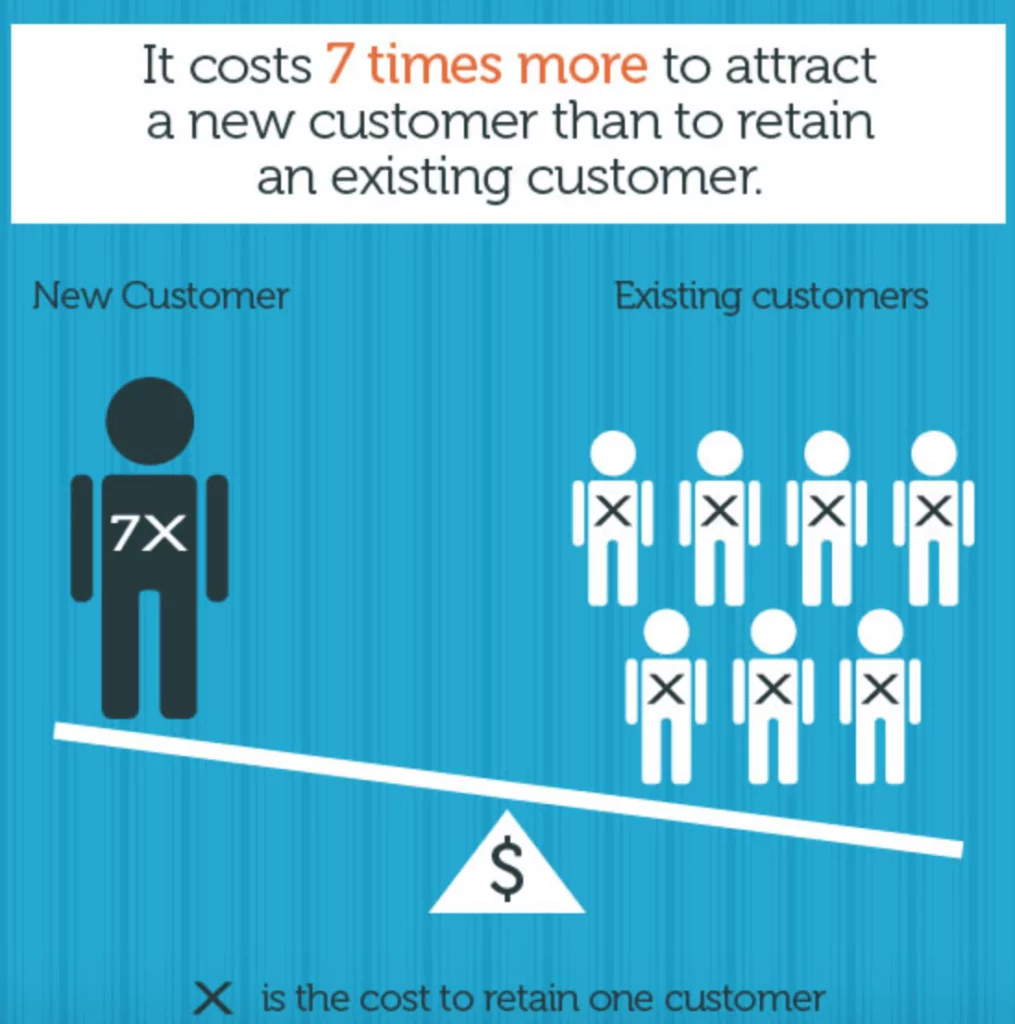Good customer experience goes a long way. Brands with superior customer experience can bring in 5.7 times more revenue than their competitors that are less focused on the customer experience.
While customer experience is a top priority, according to PwC, only 49% of U.S. customers say companies deliver a satisfactory customer experience. So where is the disconnect?
Let’s dive into customer experience and read on for tangible ways to improve your customer experience bottom line.
What is customer experience?
Customer experience (CX) is a customer’s perception of the interactions (positive and negative) between themselves and a business.
The sticking point in this definition is the focus on how customers perceive you, not what actually occurs.

So, you may think your company provides high-quality products and stellar customer service. But a customer who receives a broken product and inadequate support will have a very different perception of your brand.
Why customer experience is important
Positive CX leads to increased customer loyalty, a higher net promoter score, and greater revenue. Unfortunately, it’s much easier to drive customers away than retain them.
One in three customers will stop doing business with a brand after just one negative experience, found PwC. On the other hand, it can take as many as 12 positive interactions to repair the damage of a single negative experience.

The stakes are high, and competition is always on the rise. In the digital age, in which one bad online review can deter countless potential clients, the customer is truly king.
To help you improve your customer experience, we compiled these useful tips to create strong customer experiences across the board.
6 tips to deliver a winning customer experience
The “ideal customer experience” looks different for every type of customer. But with these general tips, you can build a better CX strategy and enjoy increased customer loyalty and higher revenue.
1. Understand what your customers want
First ask yourself:
- Who are my customers?
- What challenges are they facing?
- What is their emotional state when they seek my products or services?
- What are their goals?
Generally, customers desire several key things from the companies with whom they do business: speed, consistency, convenience, personalization, and friendliness.
Let these fundamentals guide your CX efforts and you’ll see the business benefits. PwC research saw that 43% of consumers would pay more for greater convenience, while 42% would pay more for a friendlier experience. Another 63% said they would be willing to share more personal information with brands in exchange for greater personalization.
2. Leverage the power of data analytics

Once you understand the core elements of a positive customer experience, you can analyze customer data to design a more specific CX improvement plan.
The good news is most companies already have massive amounts of customer data at their disposal.
With advanced analytics, companies can:
- Detect patterns in customer behavior and demographics to prevent churn and increase satisfaction
- Identify which promotions are most effective for renewing or upselling customers
- Determine how to best implement product upgrades
- Inform marketing strategy to effectively segment and tailor advertising campaigns
The potential applications for analytics to improve CX are limitless.
3. Take a broad view of the customer journey
When considering the customer journey, don’t just focus on each individual touchpoint, but how they all connect.
While different employees might only interact with customers at certain points, the customer experience is the sum of all of these interactions. If just one of these touchpoints is less than satisfactory, it can harm the overall experience.
Put yourself in the customer’s shoes. Where is there friction in the process? Is there one touchpoint that slows everything down? Are there any customer complaints that repeatedly arise? The customer journey should be cohesive and seamless, not disjointed and slow.
4. Provide top-notch customer support
Customers seek support when there is a problem or they don’t know how to do something. When contacting support, they are often frustrated or stressed. The heightened emotions associated with these interactions can have an outsized effect on the entire customer experience.

That’s why it’s important that your customer support is highly trained and knows how to handle any issue. This can range from support agents solving the query themselves or escalating to the right person for immediate care.
Tech companies face unique challenges in the customer support department. The rapid pace at which companies develop digital products often makes it difficult for support staff to keep up. Tools like a Digital Adoption Platform (DAP), which provides contextual, in-the-moment navigational prompts, are effective training aids for customer support staff and customers themselves.
When Bank of Montreal Financial Group (BMO) implemented DAP, they saw a 50% drop in customer support requests as customers were clearly guided through new or updated features.
DAP helps internal support teams stay on top of processes and technology and enables customers more self-guided autonomy within websites or applications.
Overall this streamlines the customer experience by reducing the customer support ticket load and equipping customer support agents with the knowledge they need to know to quickly address support queries.
5. Continuously strive to improve quality
There’s no shortcut here. You can have the friendliest salespeople and the most helpful customer support, but if the quality of your products and services is poor, your customers will seek a better product somewhere else.

Product improvement efforts should be an ongoing endeavor. Listen to customer feedback and solicit ideas from employees to guide you.
6. Establish trust with greater engagement
Customers increasingly expect to engage with brands online, and these interactions can have a substantial impact on CX.
Customers either want the answer to be self-explanatory or if they are in need of assistance, be able to get a human response to questions or customer reviews.
Brands that respond to negative customer reviews actually improve credibility and trust among customers. It’s an opportunity for a brand to show they care about a customer’s experience and demonstrate openly how they will prevent or rectify the issue in the future. If handled correctly, a negative customer review can actually help you generate more sales.


